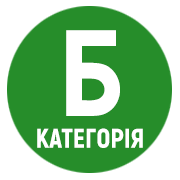Development of the leaf area and the productivity structure of the sunflower hybrids in the north-eastern Forest-Steppe of Ukraine
Abstract
At the present stage, the model of leaf plant development is increasingly considered as the main element of genotypes adaptation to specific cultivation conditions, geographical area, etc. Under these conditions, the potential of the hybrid, the range of its adaptation to environmental conditions is determined by the level of interaction between the development of the assimilation apparatus and the generative organs. An urgent task aimed at improving the productivity of sunflower crop due to the use of genotypes adapted to the conditions of the north-eastern Forest-Steppe and Polyssya of Ukraine is to identify typical schemes of interaction of photosynthetic potential and parameters of plant productivity and crop yields.
The studies were conducted in accordance with the program for the development of a variety model for the conditions of the north-eastern Forest-Steppe and Polyssya of Ukraine. Field experiments were carried out in 2016‒2019 at the Sumy National Agrarian University and the Institute of the Agriculture of North East of Ukraine. In the studies, 28‒56 hybrids of different originators were tested annually. Sunflower was cultivated according to the technology recommended for the area, with pre-harvesting density of 60 thousand plants / ha. Harvesting was done manually, from two central rows of a 4-rows plot. The results were processed using the Statistics package.
The data on yield indices and values of leaf area coefficient (LAC) of crop for groups of varieties separated by the duration of growing season were analyzed. It was found that the increasing of leaf area was accompanied by an increasing of yield in case of comparing groups with dates of technological maturation until 20 August, 1 September and 10 September. In all cases, the maximum value of the leaf area index ranged from 3.12‒3.52 m2/m2. These dynamics of indicators indicated to the regulatory nature of the values of leaf area coefficient (LAC) of modern sunflower crop and the absence of genotypes (or conditions) capable of maintaining these values at the level of more than 3.3‒3.5 m2/m2.
According to the analysis of correlation pleiades, the presence of several levels was found and the relative independence of the relationships between the group of parameters, determining the morphological structure of plants and the vertical structure of crop and the group of parameters, characterizing the content of chlorophyll and its concentration per unit area of leaf surface. In practical terms, the results of the analysis indicated the potential informative nature of the complex use of parameters characterizing the morpho-structure of plants, primarily the index of leaf area and the index of chlorophyll concentration per unit area.
In order to isolate the typical schemes characteristic of different levels of adaptation to the conditions of the zone, data on 29 sunflower hybrids distributed in the region were clustered. The results of the analysis allowed to distinguish three significantly different algorithms for the realization of the vegetative and generative potential of sunflower hybrids in the area of the north-eastern Forest-Steppe of Ukraine. It has been established that one of the factors for successful realization of the generative potential of sunflower hybrids in the conditions of the zone is the ability to preserve and (in some cases) to improve the structure of relations between the dynamics and parameters of the plant leaf apparatus and the parameters of their generative development.
References
2. Zelenskij, M. I., & Agaev, M. G. (2007). Nekotоrye tendencii jevoljucionnoj izmenchivosti fotosinteza kul'turnyh rastenij [Some trends in the evolutionary variability of photosynthesis of cultivated plants]. Trudy po prikladnoj botanike, genetike i selekcii, 164, 361–377 (in Russian).
3. Zelenskij, M. I. (1995). Fotosinteticheskie harakteristiki vazhnejshih selskohozjajstvennyh kultur i perspektivy ih selekcionnogo ispolzovanija [Photosynthetic characteristics of the most important agricultural crops and prospects for their selective use]. Teoreticheskie osnovy selekcii, II. Ch.II, 466 – 554 (in Russian).
4. Nichiporovich, A. A. (1996). Fotosintez i voprosy povyshenija urozhajnosti rastenij [Photosynthesis and issues of increasing plant productivity]. Vestnik selskohozjajstvennoj nauki, 19(2), 1−12 (in Russian).
5. Musіyenko, M. M., Parshikova, T. V., & Slavnij, P. S. (2001). Spektrometrichnі metodi v prakticі fіzіologіі, bіohіmіі ta ekologіі roslin [Spectrometric methods in the practice of plant physiology, biochemistry and ecology]. Fіtocentr, Kyiv (in Ukrainian).
6. Carenko, O. M., Zlobіn, Ju.A., Skljar, V. G., & Panchenko, S. M. (2000). Kompjuternі metodi v sіlskomu gospodarstvі ta bіologіi [Computer Methods in Agriculture and Biology]. Unіversitetska kniga, Sumi (in Ukrainian).
7. Zhemchuzhin, V. Ju. (2009). Formuvannja urozhaju sonjashniku rіznih naprjamіv vikoristannja zalezhno vіd umov mіneralnogo zhivlennja [Formation of sunflower crop of different directions of use depending on the conditions of mineral nutrition]. Vіsnik Lvіvskogo NAU: Agronomіja, 13, 367‒371 (in Ukrainian).
8. Melnik, A. V. (2004). Porіvnjalnij analіz koreljacіj morfologіchnih oznak ta produktivnostі sonjashniku [Comparative analysis of correlations of morphological features and sunflower productivity]. Vіsnik Sumskogo NAU, Vip.1 (8), 82-84 (in Ukrainian).
9. Trocenko, V. І., & Zhatova, G. O. (2015). Etapi formuvannja produktivnostі roslin ta urozhajnіst posіvіv sonjashniku [Stages of formation of plant productivity and yield of sunflower crops]. Vіsnik centru naukovogo zabezpechennja APV Harkіvskoї oblastі, 18, 165–173 (in Ukrainian).
10. Terentev, P. V. (1959). Metod korreljacionnyh plejad [Correlation Pleiad Method]. Vestnik Leningradskogo universiteta, 9, 137−141 (in Russian).
11. Rostova, N. S. (2002). Korreljacii: struktura i izmenchivost [Correlations: structure and variability]. Izdatelstvovo S-Peterb. Un-ta, SPb (in Russian).
12. Lakin, G. F. (1980). Biometrija [Biometrics]. Vysshaja shkola, Moscov (in Russian).
13. Trocenko, V. І., & Zhatova, G. O. (2018). Parametri fotosintetichnogo aparatu sonjashniku v modeljah sortіv dlja zoni pіvnіchno-shіdnogo Lіsostepu ta Polіssja [Parameters of photosynthetic sunflower apparatus in varieties models for the area of the northeast Forest-Steppe and Polissia]. Vіsnik Sumskogo NAU, 8(35), 53‒58 (in Ukrainian).
14. Zhuchenko, A. A. (1990). Adaptivnoe rastenievodstvo (jekologo-geneticheskie osnovy) [Adaptive crop production (ecological and genetic basis)]. Shtiinca, Kishinev (in Russian).

 ISSN
ISSN  ISSN
ISSN 


